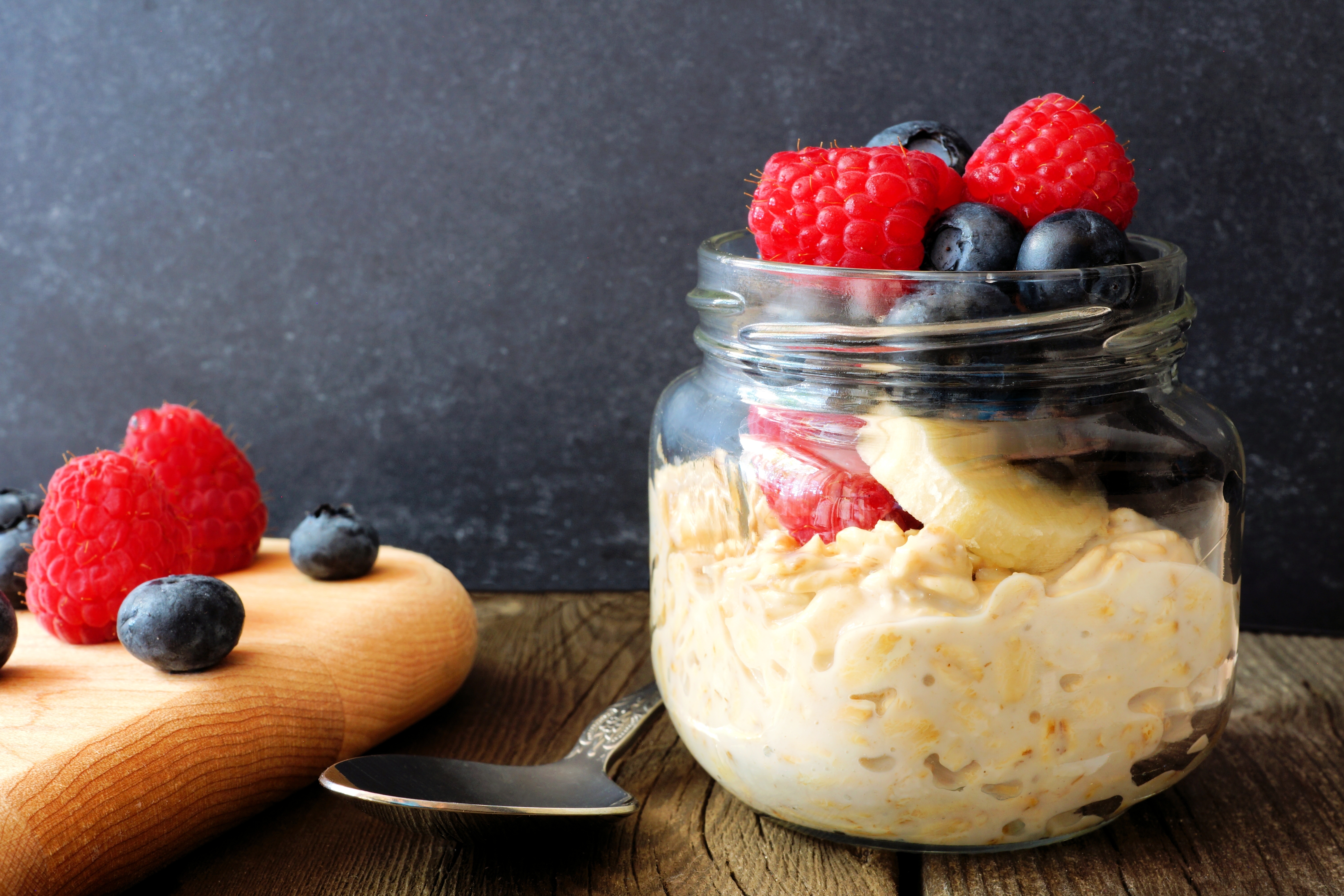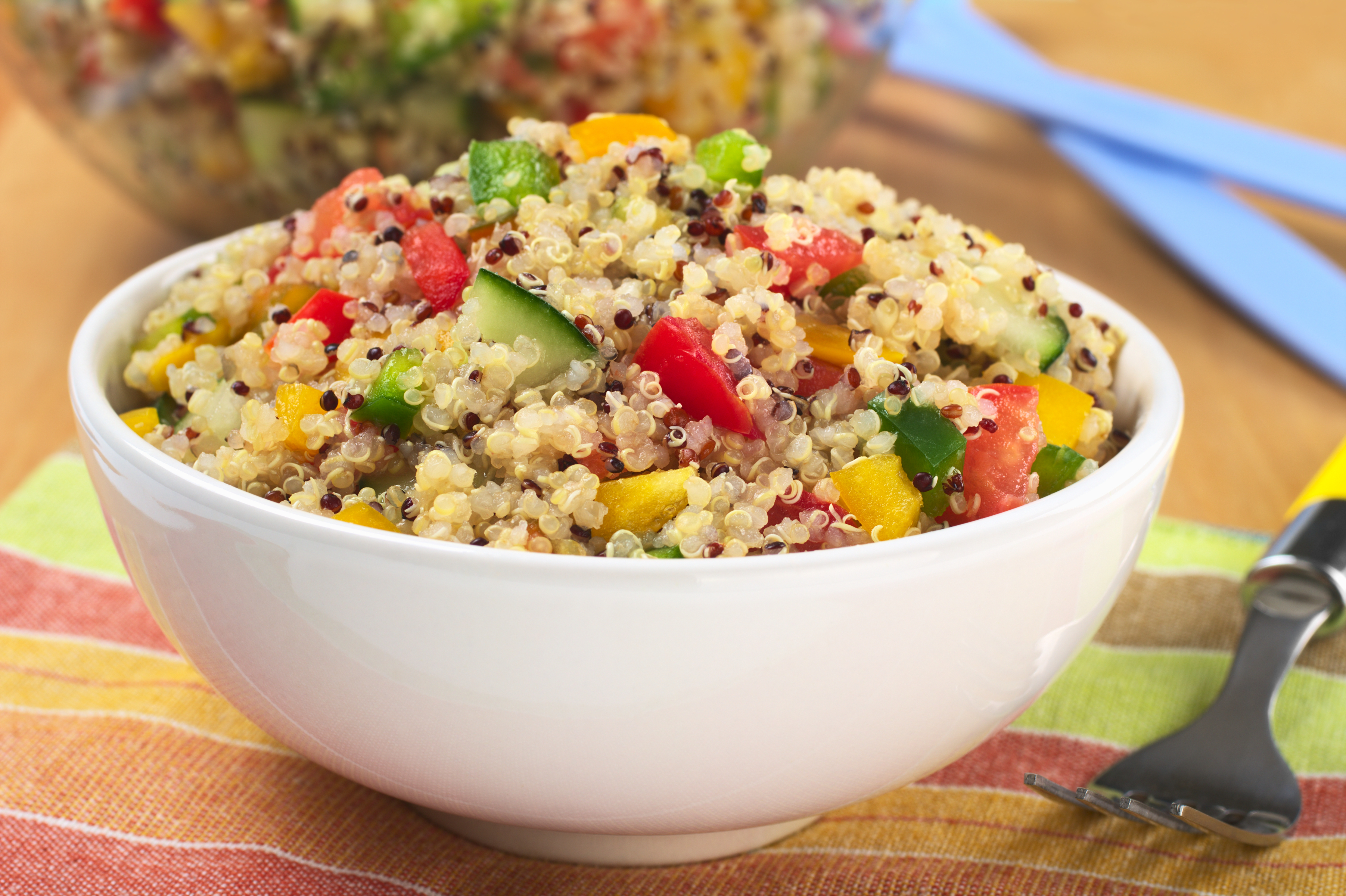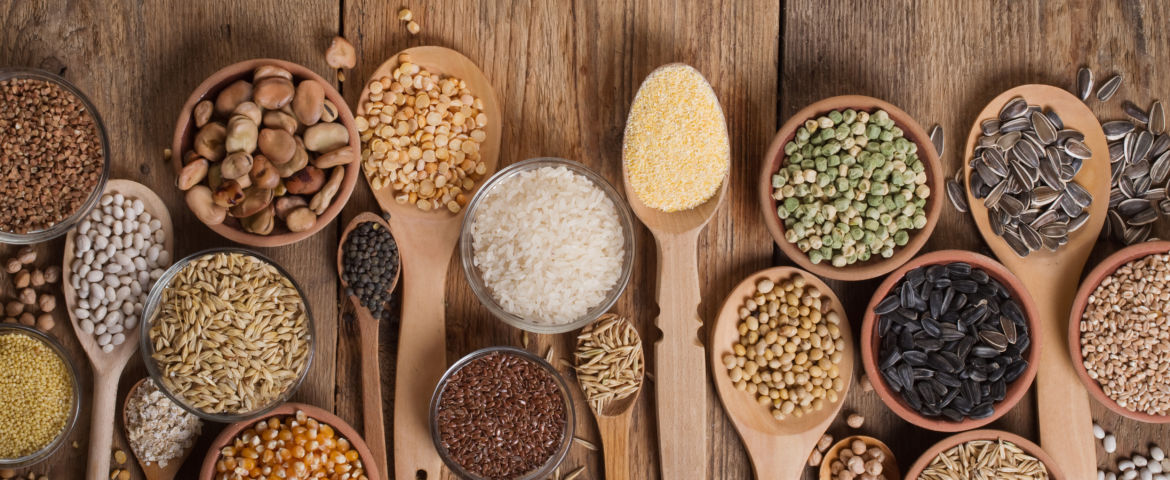By: Mitchell Shaw, Clinical Dietetic Technician
During the refining process, not only are parts of the grain lost, but nutrients, such as fiber, protein, and healthy fats are also processed out. Whole grains, however, still contain all the unprocessed parts of a grain: the germ, endosperm, and bran. Whole grains also contain disease fighting antioxidants as well as fiber that can help improve cholesterol levels and give you a feeling of fullness.
Get the most out of your grains and choose whole over refined whenever you can.
Other benefits of whole grains include a lower risk of developing heart disease, stroke, diabetes, cancer, and obesity. Examples of whole grains include those commonly known, such as oats, barley, brown rice, wild rice, corn, rye and wheat, as well as lesser known whole grains like quinoa, spelt, sorghum, amaranth, and faro.
Here are 5 ways to incorporate more whole grains into your everyday diet:
- Ditch the sugary cereal and try something new. Overnight oats are a great choice of whole grains and can be prepared the night before to save you time in the morning. These Banana Berry Oats are a great example, but feel free to experiment with different fruits and flavors to find your new favorite way to start the day.

- Many types of bread say “Whole Wheat” or “Seven Grain” on the packaging, but aren’t as healthy as they sound. Make sure the first ingredient is “whole wheat flour” and not “enriched wheat” or “enriched bleached flour.” These words signal that nutrients were added back into refined flour, but still leave out benefits of whole grains.
- Change it up. Swap out the potatoes for an ancient grain, and add a risotto or a pilaf to your meal. This multi grain risotto, from Spectrum Health Chef Steve Dorey, is heart healthy and delicious. Experiment and try something out of your comfort zone; you may just find a new go-to for your family.
- Barley or quinoa is an easy way to add whole grains to your salad. Quinoa is especially good choice as it includes much-needed amino acids. It’s also a good source of protein. Try taking your choice of veggies and adding it to a bed of whole grains–like this fiesta style salad.

- If you can’t get yourself to make the switch to whole grains completely, try a product that contains a mixture of whole grains and refined grains. Small steps in the right direction can benefit your overall health and motivate you to make more changes. For instance, the next time you prepare your favorite pasta dish, try it with whole grain noodles.
Get the most out of your grains and choose whole over refined whenever you can. Implementing just a few of these tips can help you to live a longer and healthier life.
About the author: Mitchell Shaw is a clinical dietetic technician at the Helen Devos Children’s Hospital and a current dietetic intern through Andrews University. He received his bachelor of science in nutrition and dietetics through Michigan State University and is currently working toward his masters. While pediatric nutrition is his focus, he also believes in promoting health and well-being through nutrition to those of all ages and in all walks of life.


